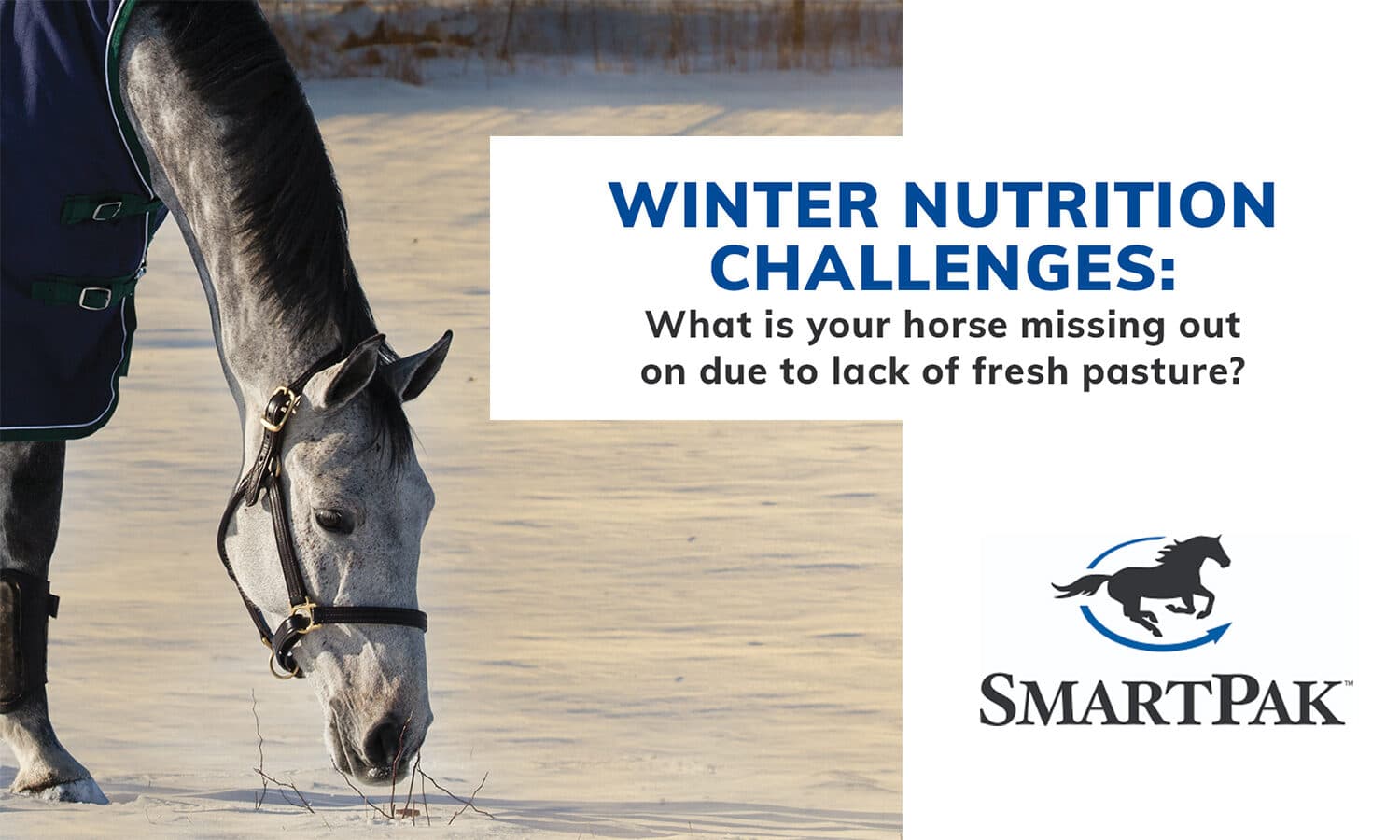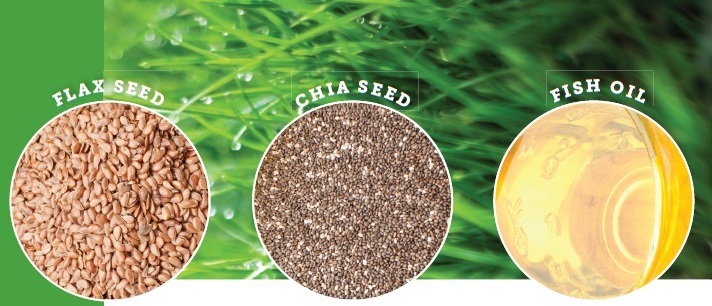The Grass Isn't Just Greener

Your horse was designed to spend his days roaming and grazing, thriving on the nutrients found in fresh grass. But since acres of pasture can be hard to come by, most horse owners turn to hay to meet their horses’ forage requirements. Unfortunately, many of the key nutrients found in fresh pasture are lost as soon as it’s cut and dried for hay. If your horse isn’t one of the lucky few that has year-round access to fresh pasture, there could be gaps in his diet that need to be filled in.

Omega 3s
Fresh grass contains omega 3 fatty acids, which are essential to your horse’s well-being because they help support cellular health and a normal response to inflammation. They’re also important because they balance out the omega 6 fatty acids in your horse’s diet. Though your horse needs both types of omega fatty acids, maintaining the correct balance between the two is critical. Because omega 6s support a pro-inflammatory response, it’s recommended that your horse have two to four times more omega 3s than omega 6s.
Vitamin E
Vitamin E is a powerful antioxidant that helps protect your horse’s body from the oxidative stress of exercise, illness, and certain medical conditions. While vitamin E is found in high amounts in fresh pasture, the potency starts declining the moment pasture is cut for hay. Therefore, any horse that doesn’t have access to grass may need vitamin E supplementation to fulfill their daily requirements.
Vitamin A
While vitamin A is most well-known for its role in maintaining healthy vision, it’s also needed for reproduction, immunity, and normal skeletal development. Horses need to satisfy their daily requirements for vitamin A with their diet, but only horses with access to fresh green pasture or high-quality alfalfa are likely to meet that requirement with their forage alone.
Unfortunately, by the time that grass is cut, dried, baled, and stored, hay contains virtually no omega 3s. Even worse, fortified grain is high in omega 6s, so the combination of a low-pasture, high-grain diet can lead to an imbalance in the omega 3 to omega 6 ratio that sets the horse up for a chronic state of inflammation. That’s why if your horse doesn’t have access to plenty of fresh pasture, supplementing with omega 3 fatty acids is a smart choice.
Filling in the Gaps
Luckily, there are easy ways that you can help your horse get some of the nutritional benefits of grazing even when your fields are barren. SmartOmega 3 & E™ Ultra provides high levels of omega 3 fatty acids from flaxseed, chia seed, and fish oil, as well as vitamins A and E.

Along with providing the nutrients your horse needs to meet his daily requirements, grazing is also beneficial for these three key areas:
Digestive Health
A slow, steady intake of forage is essential for a healthy digestive tract. Go to SmartPak.com/ColicRisks to learn more about supporting healthy digestion and find out what you can do to help.
Joint Health
The constant mobility that comes with grazing can also be beneficial for your horse’s joint health. In addition to providing daily turnout and exercise, a joint supplement is a smart way to help keep your horse going strong. Visit SmartPak.com/SmartFlexFinder to find the joint supplement that meets your horse’s needs.
Hoof Health
Proper circulation can have a big impact on hoof health, and the first step to promoting good circulation is to promote activity. Check out SmartPak.com/HoofCirculation to read a Q&A with SmartPak’s Hoof Health Consultant, Danvers Child, explaining how keeping your horse on the move affects his hoof health.














